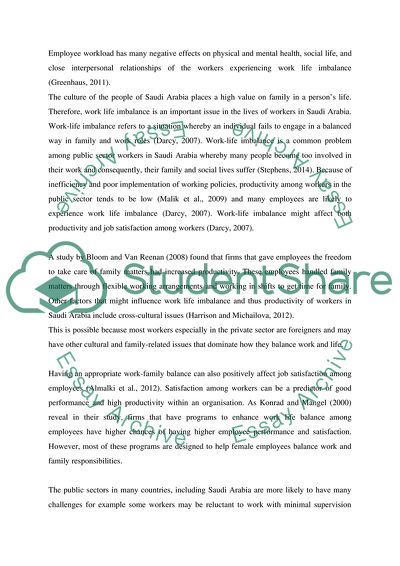Impact of work life imbalance on the productivity of workers in Saudi Essay - 4. Retrieved from https://studentshare.org/human-resources/1654362-impact-of-work-life-imbalance-on-the-productivity-of-workers-in-saudi-public-sector
Impact of Work Life Imbalance on the Productivity of Workers in Saudi Essay - 4. https://studentshare.org/human-resources/1654362-impact-of-work-life-imbalance-on-the-productivity-of-workers-in-saudi-public-sector.


